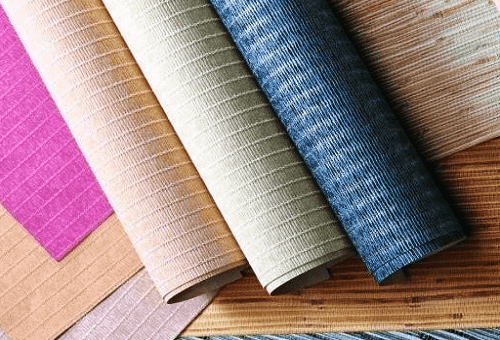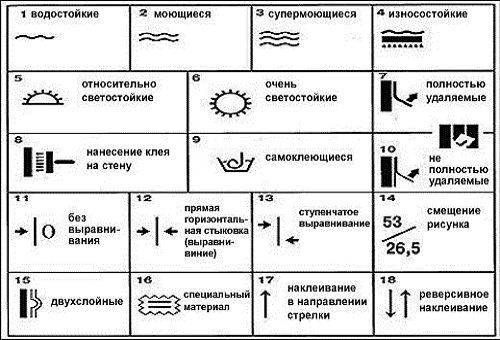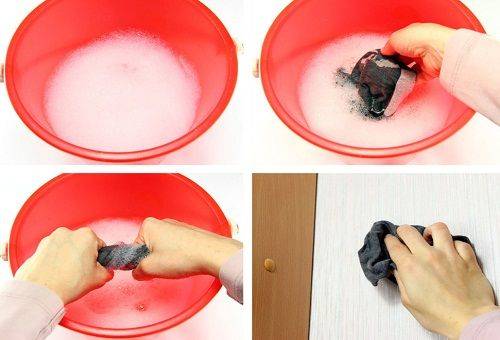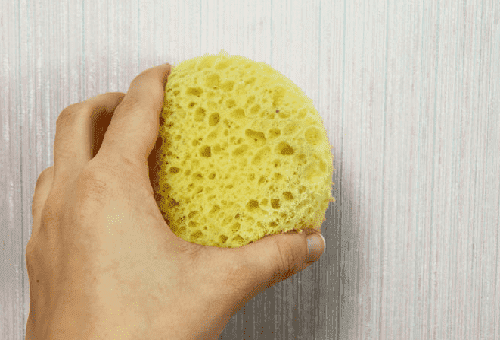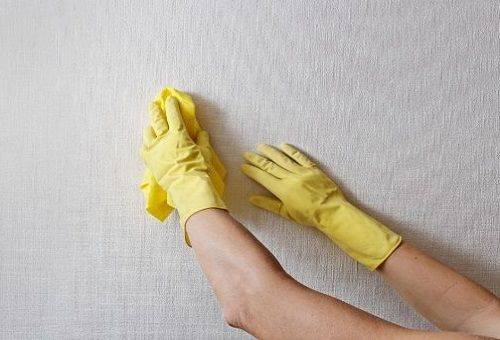What types of wallpaper can be washed with household cleaning products?
Content:
Despite the continuing popularity of wallpaper as a wallcovering in residential and domestic premises, many housewives today have problems cleaning them. The procedure will be greatly simplified if you set in advance how to wash this or that type of wallpaper. At the same time, washable and moisture-resistant products should not be confused. If the former can be cleaned of dirt without fear and risk with the help of special tools and instruments, the latter will respond to such an aggressive effect by changing the texture and appearance.
Vinyl wallpapers, including those on a non-woven basis, cork, glass and metal varieties of products, will be able to fully carry out wet cleaning. As for wallpaper for painting, it all depends on the type of coating. In one case, the use of a damp cloth will suffice; in the other, a full-fledged treatment using detergent compositions will be required.
Rules for reading labeling on wallpaper
Today it is not necessary to guess whether it is possible to influence specific materials with a moist environment. To facilitate the lives of consumers, wallpaper manufacturers have long used a special labeling system.
- One wave placed in a square. Such products do not respond well to wet environments. To clean them, you will have to limit yourself to using a damp cloth or sponge without the addition of detergents.
- Two waves squared. Household chemicals are allowed, but in minimal quantities. Manipulation is carried out with extreme caution.
- Three waves squared. These are resistant washable wallpapers that can easily withstand the impact of specialized products and even soft abrasives.
- Waves squared with a comb. To wash such products, you can even use brushes, abrasives and a washing vacuum cleaner. Most often, such materials are used in the kitchen.
After reading the label, it is still worth testing the selected product in an inconspicuous area of the product to eliminate any negative consequences. After that, you can begin to remove dirt and grease in a standard or specific way.
Wallpaper pretreatment and washing
Regardless of the type of wallpaper, their traditional regular cleaning is carried out according to approximately one scenario and consists of the following mandatory steps:
- Dry processing. At first it is recommended to vacuum the walls or walk on them with a dry towel. This will eliminate the layers of dust, which when moisture gets on them usually turn into black stains. Only if dry cleaning did not give an ideal result, you need to apply to wet treatment.
Tip: Dry processing should be carried out using the minimum power of a vacuum cleaner, otherwise the products may come off or swell in separate places.
- Preparatory stage. We prepare a solution of slightly warm water and a few tablespoons of liquid powder. If there are traces of fat on the surface, then we additionally introduce a little dishwashing detergent. Stir well, but do not beat until foam. To clean the washable wallpaper, it is better not to use foam at all, stains often remain from it.
- Surface wash. In the resulting product, we moisten the sponge and begin with quick movements in one direction, to clean the surface. It is impossible to wet the material strongly and to engage in one area for a long time, this makes the raw material sag. Pressure is also not welcome, so you can remove the upper protective layer from the products.
- Drying. After cleaning, wipe the surface with a dry cloth and leave the material to dry, without creating a draft in the room.
If it was not possible to wash some spots in this way, you need to wait for the wallpaper to completely dry and only after that proceed to the local effect on pollution.
Recommendations of specialists to combat stains of various nature
To clean products from individual stains, it is recommended to carry out the following manipulations before washing:
- Fingerprints should be easily rubbed with the soft part of the eraser, after which it is possible to carry out processing with a detergent. Rubbing the surface with the flesh of brown bread will give the same effect.
- Grease stains or stains should be treated with talcum powder. To do this, pour the powder into a slightly damp washcloth and apply it to the pollution with wetting movements. After 10 minutes, we clean the remaining product with a dry cloth and after another half hour, if necessary, wash the material in the traditional way.
- Traces of water-based felt-tip pens are easily removed with soapy water, after which it is not even necessary to wash the entire surface. For alcohol markers, you will need medical alcohol and mandatory subsequent wet treatment of the site.
Even gentle washing of profile wallpaper leads to the gradual destruction of the material, therefore this option should be applied only in the most extreme cases. It is better to limit yourself to regular dry cleaning and local exposure to obvious contaminants.
